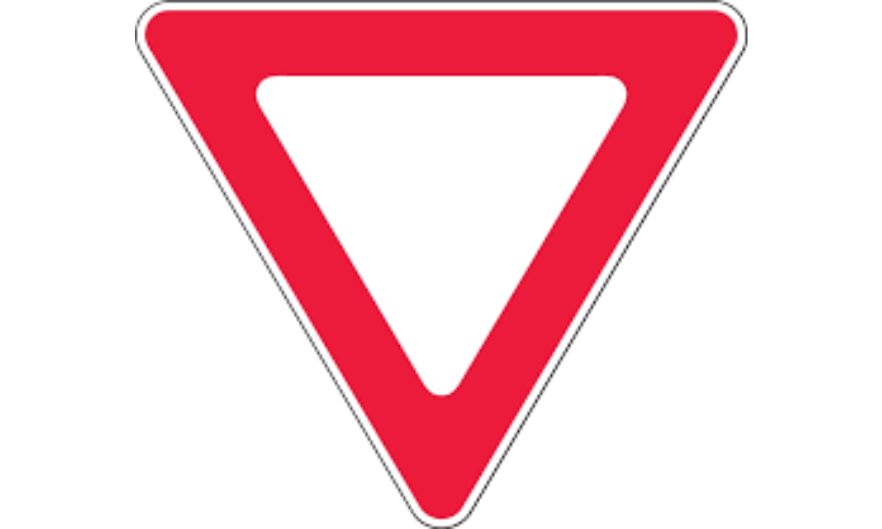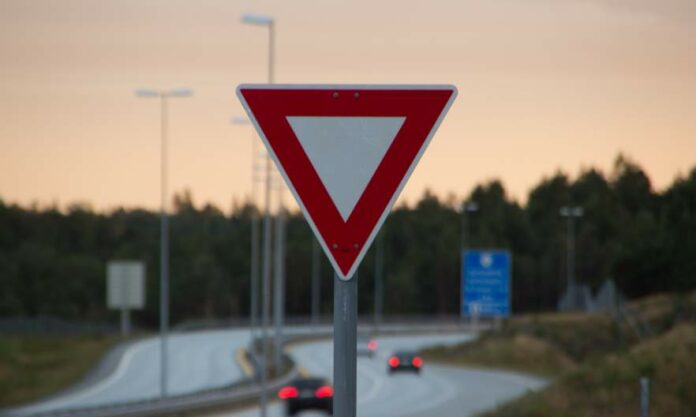A yield or give way sign is a simple red triangle with a white background pointed downwards that tells drivers who are merging to get ready to stop if they need to let another car go by. If a driver slows down or stops to let another car pass, they have followed the yield sign.
The yield or give way sign is an essential part of road traffic management in Germany, known as “Vorfahrt gewähren” in German. It plays a significant role in maintaining smooth traffic flow and preventing accidents. This sign, recognized by the number 205, instructs drivers to allow other road users the right of way under specific conditions.
Design of the Yield or Give Way Sign in Germany
The yield sign in Germany, known as Verkehrszeichen 205, appears as an inverted white triangle with a red border. Positioned at intersections or junctions, it signals, “Attention, I must let cross traffic pass here.” Drivers approaching this sign should slow down, assess the situation at the junction, and yield to vehicles from the left or right if necessary.
While the basic design of the yield sign is consistent across many countries, some variations exist. The German yield sign’s specific shape and color scheme are aligned with international standards but might have some differences from other countries.

Legal Regulations Surrounding the Yield or Give Way Sign
The German Road Traffic Regulations (StVO) govern the placement and interpretation of the yield sign. The give way sign in Germany is often found at roundabouts and is combined with other signs, such as “Kreisverkehr,” meaning vehicles inside the roundabout have priority. The rules include entering without signaling and exiting with signaling.
Remember, a stop sign is not the same as a yield sign. A stop sign means that every driver must come to a full stop before going on, even if there are no other cars or people around.
A parking ban is in effect both before and after this traffic sign. Outside urban areas, the parking ban extends to 50 meters, while within towns, it’s five meters. Sometimes, additional signs supplement the yield sign, such as “Radfahrer Stop 50m,” indicating that cyclists frequently cross the road 50 meters ahead at the intersection.
Penalties for Not Yielding
Disregarding the yield sign in Germany can lead to consequences, including fines and points on the driving record. Here’s an overview of the penalties from the penalty catalog:
| Violation | Fine(€) | Points |
| Approaching priority road at an inappropriate speed | 10 | |
| Obstructing a vehicle with the right of way | 25 | |
| Interference with car in the preemptive position is prohibited with endangerment involved. | 100 | 1 |
| Not stopping at the stop sign with endangerment is a violation of the law. | 100 | 1 |
| Interference with the car in the preemptive position is prohibited with endangerment involved. | 80 | 1 |
| Ignoring yield sign resulting in property damage | 120 | 1 |
Importance of the Yield Sign in Road Safety
Preventing Accidents
The yield sign plays an important role in preventing accidents by ensuring that drivers give way where required. It contributes to managing traffic at intersections, thereby reducing collision risks.
Enhancing Traffic Flow
By regulating the right of way, the yield sign helps in smoother traffic flow, minimizing delays and congestion, especially during peak traffic hours.
Education and Awareness
The yield sign fosters respect and cooperation on the roads, being an essential tool for driver education and awareness in Germany.
FAQs
Conclusion
The yield or give way sign in Germany is more than a traffic symbol; it’s a cornerstone of road safety and effective traffic management. Its design, legal regulations, and strategic importance emphasize its essential role in German society.






